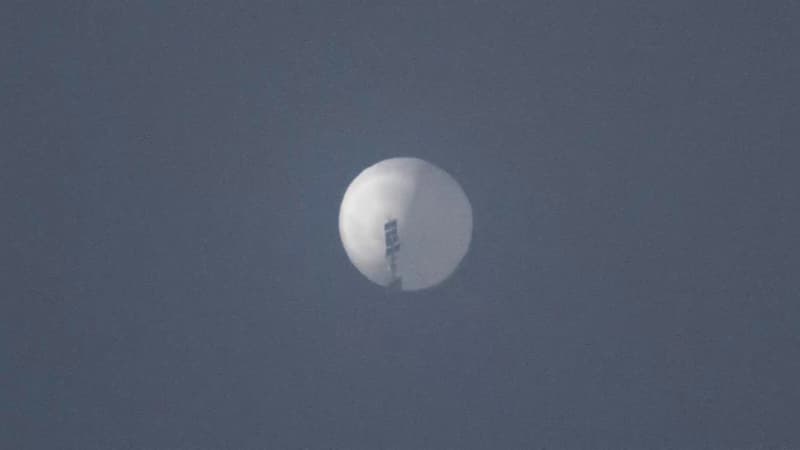Diplomatic relations that are tense. This Saturday, Beijing considered that the controversial overflight of a Chinese observation balloon in the United States was used as a pretext to “smear” China. At first, the Chinese authorities evoked an “involuntary” intrusion and expressed their “regret”.
In view of this matter, which is causing a stir in the United States, the head of American diplomacy, Antony Blinken, has postponed his scheduled visit to Beijing on Sunday and Monday. However, he was supposed to ease tensions with the Chinese rival. It is postponed to a later date, when “the conditions will be met,” according to a senior official at the Secretary of State on condition of anonymity.
hard to spot
It must be said that the appearance of this ball raises thorny questions. Contacted by AFP, William Kim, surveillance balloon specialist at the Marathon Initiative think tank in Washington, confirms that these planes are powerful surveillance tools, which are also difficult to shoot down.
Less used since the end of the Cold War in favor of reconnaissance satellites, balloons nevertheless remain formidable tools, with clear advantages compared to their successors, which are much more exposed to ground and space attacks. .
Additionally, balloons have other advantages, including their ability to escape radar surveillance. “They’re made of materials that don’t reflect light, they’re not metal. So while they can be quite large… detecting them will be a challenge.”
If they are small enough, the spy devices and payload on these planes can even go unnoticed. As for the balloon sighted over US soil, it resembles the Moon and is barely noticeable.
Greater freedom of action.
With CNN, Peter Layton, a fellow at the Griffith Asia Institute in Australia and a former Royal Australian Air Force officer, points to other advantages of balloons compared to satellites. According to him, the satellites are “more predictable in their orbital dynamics” as well as being cheaper. In fact, it is much less expensive to launch than a satellite.
“One advantage of the balloons is that they can be steered using on-board computers to take advantage of the winds. They can also go up and down to a certain point. This means they can ‘loitere’ to a certain point,” he added.
“A satellite cannot ‘loitere’ and it takes a lot to circle an area of interest to maintain surveillance,” he adds.
He is joined by William Kim, who in his observations points to the fact that, unlike satellites, balloons also have the advantage of being able to maintain a stationary position over a target to be monitored. “They can fly over the same position for months,” says the expert.
incredible?
Another advantage, and no less important, is its resistance to external attacks. If a satellite can be instantly destroyed by one shot, it is not the case with balloons, which are difficult to eliminate.
“These balloons run on helium (…) you can’t just shoot them and set them on fire” like a blimp, details William Kim. “These are not things that explode or pop,” he continues. “If you puncture it, it’s going to deflate very slowly.”
Remember that in 1998 the Canadian Air Force sent an F-18 fighter jet to try to shoot down a weather balloon considered rogue. “They riddled him with a thousand 20-millimeter bullets. And it still took six days to go down, ”he concludes.
Source: BFM TV


